EGYPTOLOGY: Bull Cults in Ancient Egypt
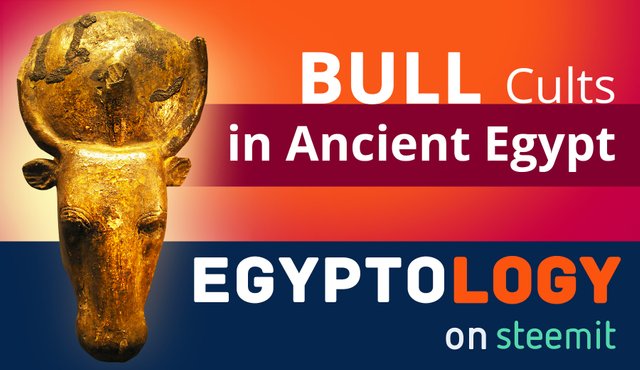
Dear readers, I am back with a brand new article about the mysterious bull cult in Ancient Egypt. Sorry for the delay but I am heavily packed with a lot of work, because I will go to Egypt next week for doing research in the desert. But I did not forget you – be sure, there is much more to read from me in the future. ;)
The Bull Cult in Ancient Egypt
Cattle in Egypt were a commonly known species used in agriculture. The cows produced milk and the bull gave meat. They were a normal part of the food production chain as they are today as well. But while cows found their appreciation in the worshipping of several cows like Goddesses such as Hathor, many people don't know that also the male part, the bull, played a big role in the religious practice of the Ancient Egyptian people. The animal Gods were connected with the power of their respective species. So the bull was a symbol of strength and great fertility. But also the aspect of safety and security can be associated with cattle since we found amuletts from prehistoric times with bull heads together with the hieroglyph 𓎃 (Gardiner: V17) which is sꜢ = spoken: sa and means protection. In other hieroglyphs we see that cattle was also part of the offering list such as: 𓃾 (Gardiner: F1) and 𓄘 (Gardiner: F24)1.
The Apis Cult
The best known sacred bull was the Apis bull. This was a cattle that was chosen from a herd to live within the temple area. The pedigree of that animal was not so important. The decision which bull was considered as sacred was based on special attributes such as muscles, especially in the neck area, and a big phallus. In most cases the bull was black.
The Ancient Egyptians worshipped them as the living image of the God Osiris. Beside this, Apis was directly connected with the cult of the Pharao, who often called himself the strong bull (𓃽 𓂸 𓂡 = kꜢ nḫ.t (spoken: ka nekhet) and often additionally depicted with a phallus hieroglyph 𓂸. The "ruler as a bull" was a common picture of the north in Egypt while the "ruler as a lion" was famous in the south.
The Serapeum
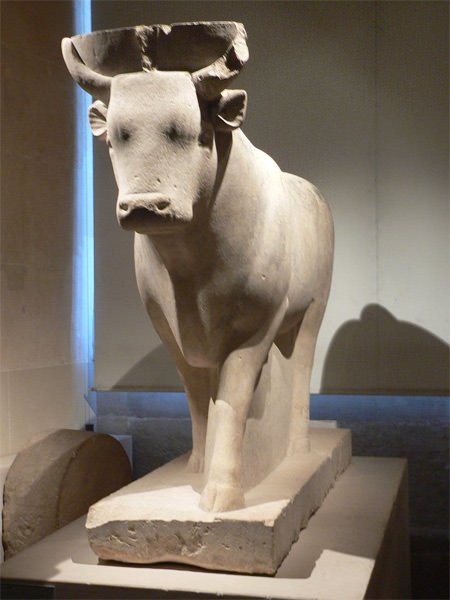
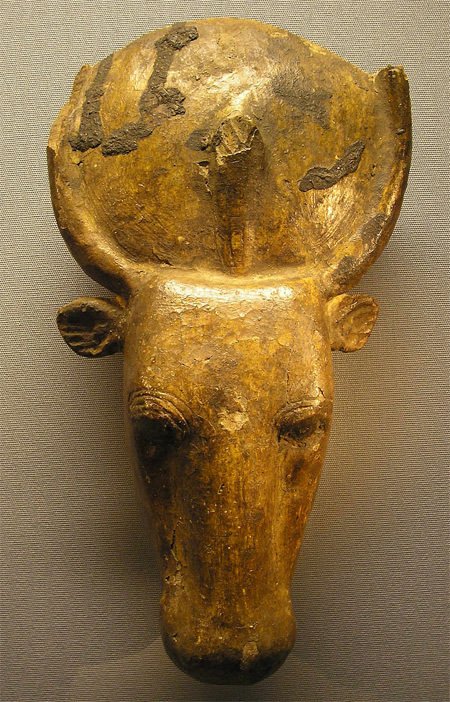
It is important to know that the sacred temple bulls were not slaughtered for meat or killed for an offering. They lived in the temple until their natural death. Then they were mummufied and buried in the famous Serapeum. This was an underground facility in the ancient city of Memphis near to Sakkara (Giza district) built by Chaemwase, a son of Ramses II. It contained many chambers with each one had a huge sarcophagus. Petrochemical analyses could determine the origin of the granite - it came from Assuan, which is 900 km south of Sakkara. Until now we have no idea of a) how was the extremely heavy material transported to that place and b) how it was brought below the earth through such small tunnels.
Here is an example of how the chambers in the Serapeum are arranged. Today this is a public museum. Unfortunately, it is a bit away of the most famous Sakkara step pyramid of Pharao Djoser, so not many people know how to reach this area. But it is definitely worth a visit! Just ask one of the many guards there. They are absolutely kind and probably will accompany you to the place.
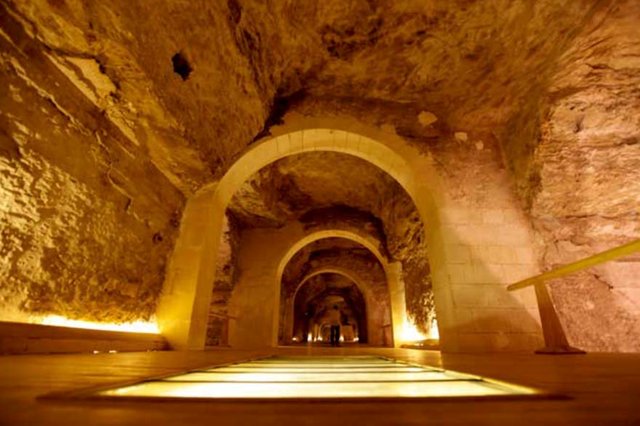
The nice guy in front of the museum is waiting day by day for visitors to come and therefore he is excited when tourists finally arrive there. The experience is breath taking! I caught myself shaking my head all the time because I could not believe what I saw. These dimensions of the sarcophagi are inconceivable. Each one of the sarcophagi weighs around 100 tons.
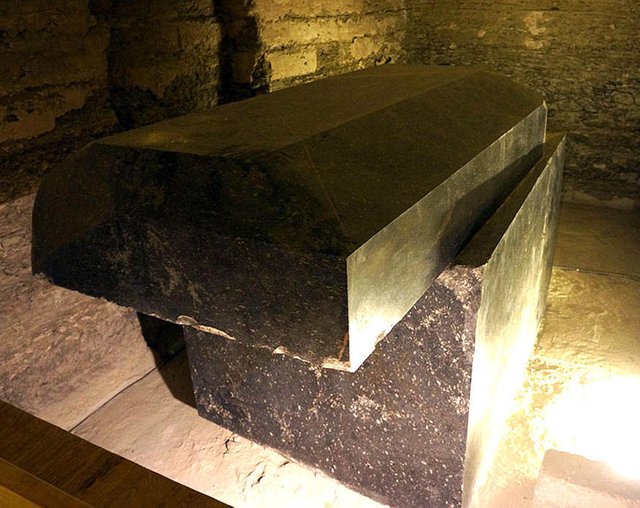
Another Serapeum was found in Alexandria, but it was destroyed by Christians that considered the cult as blasphemies.
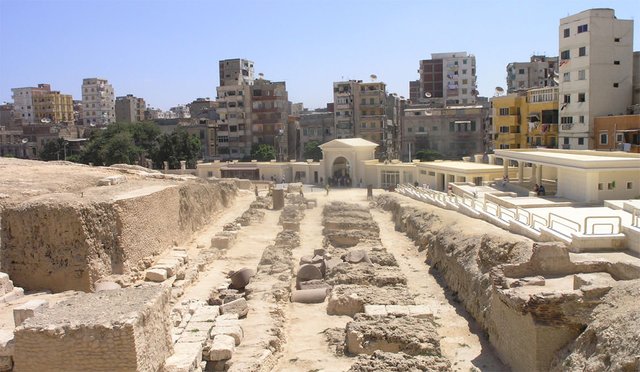
Mnevis Cult
Another cult, for example, was the cult of the Mnevis bull which was practised in Heliopolis. We know this from several sources, but the most meaningful is the so-called mnevis stela.
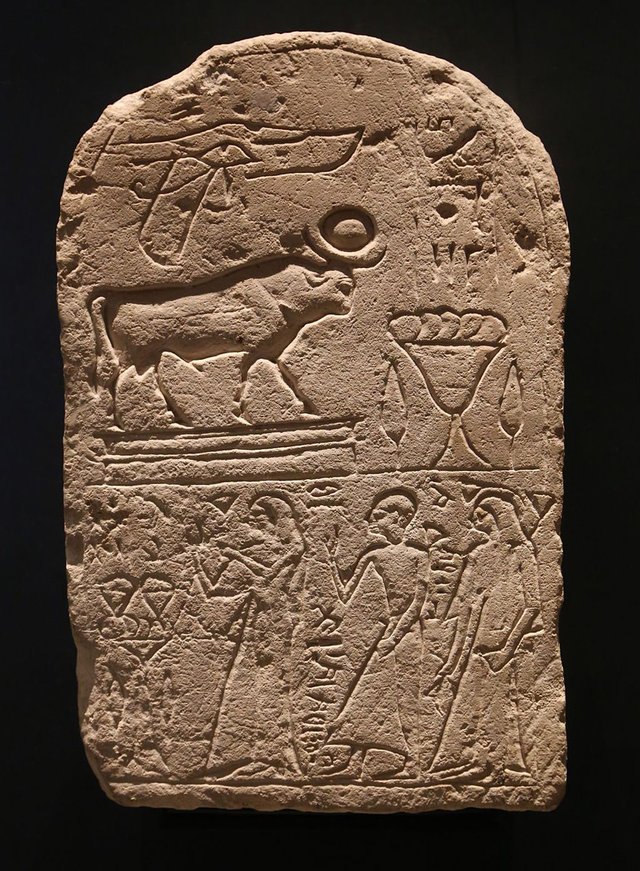
The cult of the Mnevis bulls was similar to the Apis bull cult. The only difference was the location where the animal was worshipped. Heliopolis was an important city in that time but it was situated in the east while the location of Apis was in the west. This is again an expression of believing in the sun cycle that considered east and west as the place of the dying and reborn sun. The only difference to the Apis cult was that the Mnevis bull was not only idolized as a living animal in the temple area but also as a fetish. This was a stick with a bull head on top. It is assumed that they were used as a pair erected in front of the Gott Atum just like two Obelisks.
The Buchis Cult
A third bull was worshipped in Hermonthis which is located in Armant, in middle Egypt, 650 km from Cairo. He was called Buchis and was considered the living image of the God Montu. It was associated with strength and war. The mummified bulls were buried in the so-called Bucheum as their last resting place for eternity.
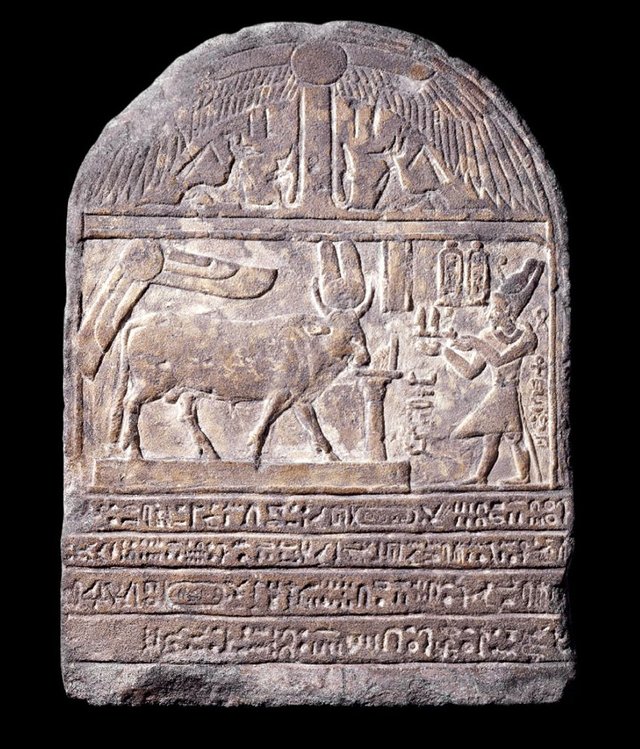
The End of the Cult
The cult ended, when in 385 A.D. almost every Egyptian temple was closed by a law of the Roman Emperors with the so-called "Edict of Thessalonica". All ritual practice was forbidden and temples were often not only closed but destroyed.
Just an additional note for my dear readers: I want to provide you with interesting facts of Ancient Egypt on a regular basis. As I mentioned above I am busy at the moment, but I promise you that will give you very soon an absolutely exclusive insight into my newest research subject. It's about lions in the desert. roaaarrr So, stay tuned.
And thank you for reading! :)
Feel free to ask all the question of what you always wanted to know about Ancient Egypt. That’s my job and my passion. Let’s discuss your thoughts and ideas.

If you liked this article, please follow me on my blog @laylahsophia. I am a german Egyptologist writing about ancient and contemporary Egypt, history of science, philosophy and life.
Notes:
1: I refer to the so called Gardiner List that was the first almost complete catalogue of hieroglyphes and that is still used by Egyptologists to identify and name a sign. Each one is listet in a certain category, for example "parts of animals". Full List as PDF
Sources and further reading:
• Moursi, Mohammed, Corpus der Mnevis Stelen und Untersuchungen zum Kult der Mnevis Stiere in Heliopolis, in: Studien zur Altägyptischen Kultur (SAK) 10, 1983, pp. 247–267. http://www.jstor.org/stable/44325739
• Classics of Science: Discovery of the Serapeum, in: The Science News-Letter, Vol. 13, No. 352 (1928), pp. 9–10. http://www.jstor.org/stable/3903573
• Petrie, William Flinders, Prehistoric Egypt, BASAE 31, 1920, pl. 8, cited after Moursi, Mohammed, aao, p. 9.
• Petrie, William Flinders, Qau and Badari II, 1928, 96, cited after Moursi, Mohammed, aao, p. 9.
• http://english.ahram.org.eg/NewsContent/9/40/53405/Heritage/Ancient-Egypt/The-Apis-tombs-at-Saqqara-Necropolis-back-on-Egypt.aspx
Images:
• Image 1 Source
• Image 2 Source
Other sources of images are cited below the respective picture.
Interesting. I like ancient history
Well done, @laylahsophia, very thorough and engaging piece. One of the most professional and accomplished posts that I have seen, here, on Steemit in the month or so that I've been part of it.
What's more, as an Egyptian, you have revealed to me an aspect of my own culture that I was not aware of! Wishing you continued success with your valuable work.
Here is a love letter I wrote to Egypt, having made the United States my home (& pining for the past):
https://steemit.com/speakyourmind/@yahialababidi/for-anyone-who-has-ever-loved-and-lost-an-original-poem
Thank you so much! I appreciate your kind words. And of course, I visited your steemit-blog. The poem is very touching...
Grateful to hear it! Write on 🙇🏻
culd bulls have been used for currency?
That's an interesting question. The sacred bulls probably not. But in the ancient times people exchanged goods. And the one with the highest "intrinsic value" (a strong, young bull or a highly fertile cow) was "expensive" in terms of what you could receive for selling it.
Money in the form of metal coins were only used very late from the 30th dynasty, around 380–343 B.C.
Just wondering. Could an Apis cult practitioner live in a Mnevis area and vice-versa?
Probably yes, because the cults did not "compete". They were directly connected with special Gods. And these Gods had their main ritual centers in the respective location. Since the Ancient Egyptians had a polytheistic worldview they could worship many Gods and Goddesses at the same time. Although we must consider that the priests often dedicated their complete life to only one temple.
Really interesting Layla! Thank you.
Egypt, the ancient supoerpower still stands still, not the people and culture but the buildings and structure, amazing.
Each sarcophagi weighs 100 tons?! What material was used? I had so much fun reading about the cults. Really appreciate that you took the time to break it down very well, @laylasophia.
Hey thank you! The sarcophagi were maid of massive blocks of granit from Asswan. :)
Nice blog man
Cek my blog or post
Sankyu
Congratulations @laylahsophia, this post is the tenth most rewarded post (based on pending payouts) in the last 12 hours written by a Superuser account holder (accounts that hold between 1 and 10 Mega Vests). The total number of posts by Superuser account holders during this period was 1175 and the total pending payments to posts in this category was $6351.20. To see the full list of highest paid posts across all accounts categories, click here.
If you do not wish to receive these messages in future, please reply stop to this comment.